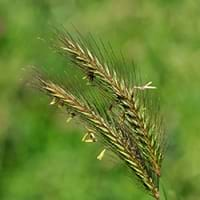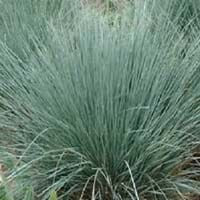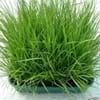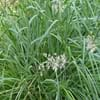Life Span
Perennial
Perennial
Type
Grass
Ornamental Grasses and Bamboo
Origin
North America, South America, Europe, Southern Africa, Asia
Southern Europe, Western Europe, Mediterranean
Types
Not Available
Not Available
Habitat
meadows, Pastures, Wet lands
Desert, Dry areas, Dry Forest, Rocky areas
USDA Hardiness Zone
Not Available
4-9
AHS Heat Zone
Not Available
9 - 1
Sunset Zone
Not Available
1a, 1b, 2a, 2b, 3a, 3b, 4, 5, 6, 7, 8, 9, 10, 11, 14, 15, 16, 17, 18, 19, 20, 21, 22, 23, 24
Habit
Not Available
Cushion/Mound-forming
Minimum Height
Not Available
Minimum Width
Not Available
Flower Color
Yellow Brown
Blue Green
Flower Color Modifier
Bicolor
Bicolor
Fruit Color
Not Available
Not Available
Leaf Color in Spring
Green, Light Green, Blue Green, Gray Green
Blue Green, Silver, Gray
Leaf Color in Summer
Light Green
Light Green
Leaf Color in Fall
Not Available
Blue Green, Silver, Gray
Leaf Color in Winter
Not Available
Blue Green, Tan, Silver, Gray
Leaf Shape
Oblong
Grass like
Plant Season
Not Available
Spring, Summer, Fall, Winter
Sunlight
Full Sun
Full Sun
Type of Soil
Loam, Sand
Clay, Loam, Sand
The pH of Soil
Not Available
Neutral, Alkaline
Soil Drainage
Well drained
Well drained
Bloom Time
Spring, Summer
Late Spring, Early Summer
Tolerances
Deer resistant, Drought, Salt
Salt
Where to Plant?
Ground
Container, Ground
How to Plant?
Seedlings
Rooted stem cutting, Seedlings, Stem Planting
Plant Maintenance
Medium
Medium
Watering Requirements
Keep the ground moist but not water-logged
Average Water Needs, occasional watering once established, Requires regular watering, Requires watering in the growing season
In Summer
Less Watering
Lots of watering
In Spring
Moderate
Moderate
In Winter
Lots of watering
Average Water
Soil pH
Not Available
Neutral, Alkaline
Soil Type
Loam, Sand
Clay, Loam, Sand
Soil Drainage Capacity
Well drained
Well drained
Sun Exposure
Full Sun
Full Sun
Pruning
No pruning needed in the early stages, Remove damaged leaves, Remove dead branches, Remove dead leaves
Cut or pinch the stems, Pinch Tips, Remove damaged leaves, Remove dead branches, Remove dead leaves
Fertilizers
avoid high rate of nitrogen in spring, Nitrogen
All-Purpose Liquid Fertilizer
Pests and Diseases
Fungal Diseases, Head smut, Leaf rust, Stem rot
Red blotch
Plant Tolerance
Deer resistant, Drought, Salt
Salt
Flower Petal Number
Single
Single
Edible Fruit
Not Available
No
Foliage Texture
Fine
Fine
Foliage Sheen
Matte
Matte
Attracts
Bees, Birds, Butterflies
Butterflies, Hummingbirds
Allergy
Not Available
Asthma, Itchiness, Rash, Rhinitis
Aesthetic Uses
Ground Cover
Ground Cover
Beauty Benefits
Improve skin condition
Not Available
Environmental Uses
Erosion control, Food for animals, soil stabilisation
Air purification
Medicinal Uses
Not Available
Not Available
Part of Plant Used
Seeds
Stem
Other Uses
Food for animals
Used as Ornamental plant
Used As Indoor Plant
No
No
Used As Outdoor Plant
Yes
Yes
Garden Design
Cutflower, Dried Flower/Everlasting, Edible, Wildflower
Container, Edging, Mixed Border, Rock Garden / Wall
Botanical Name
Hordeum brachyantherum
HELICTOTRICHON sempervirens
Common Name
Meadow Barley
Blue Oat Grass
In Hindi
meadow barley
ब्लू जई घास
In German
Wiese Gerste
Blau Ährengras
In French
orge prairie
Bleu Oat Grass
In Spanish
cebada prado
Azul hierba de avena
In Greek
λιβάδι κριθάρι
Μπλε βρώμης Grass
In Portuguese
cevada prado
Azul Aveia
In Polish
łąka jęczmienia
Niebieski Owies trawa
In Latin
pratum hordei
Blue Oat Grass
Phylum
Magnoliophyta
Magnoliophyta
Class
Liliopsida
Liliopsida
Genus
Hordeum
Helictotrichon
Clade
Angiosperms, Commelinids, Monocots
Angiosperms, Commelinids, Monocots
Tribe
Not Available
Aveneae
Subfamily
Not Available
Pooideae
Number of Species
Not Available
Not Available
Season and Care of Meadow Barley and Blue Oat Grass
Season and care of Meadow Barley and Blue Oat Grass is important to know. While considering everything about Meadow Barley and Blue Oat Grass Care, growing season is an essential factor. Meadow Barley season is Not Available and Blue Oat Grass season is Not Available. The type of soil for Meadow Barley is Loam, Sand and for Blue Oat Grass is Clay, Loam, Sand while the PH of soil for Meadow Barley is Not Available and for Blue Oat Grass is Neutral, Alkaline.
Meadow Barley and Blue Oat Grass Physical Information
Meadow Barley and Blue Oat Grass physical information is very important for comparison. Meadow Barley height is Not Available and width Not Available whereas Blue Oat Grass height is 45.00 cm and width 60.96 cm. The color specification of Meadow Barley and Blue Oat Grass are as follows:
Meadow Barley flower color: Yellow Brown
Meadow Barley leaf color: Green, Light Green, Blue Green and Gray Green
Blue Oat Grass flower color: Blue Green
- Blue Oat Grass leaf color: Blue Green, Silver and Gray
Care of Meadow Barley and Blue Oat Grass
Care of Meadow Barley and Blue Oat Grass include pruning, fertilizers, watering etc. Meadow Barley pruning is done No pruning needed in the early stages, Remove damaged leaves, Remove dead branches and Remove dead leaves and Blue Oat Grass pruning is done Cut or pinch the stems, Pinch Tips, Remove damaged leaves, Remove dead branches and Remove dead leaves. In summer Meadow Barley needs Less Watering and in winter, it needs Lots of watering. Whereas, in summer Blue Oat Grass needs Lots of watering and in winter, it needs Average Water.





